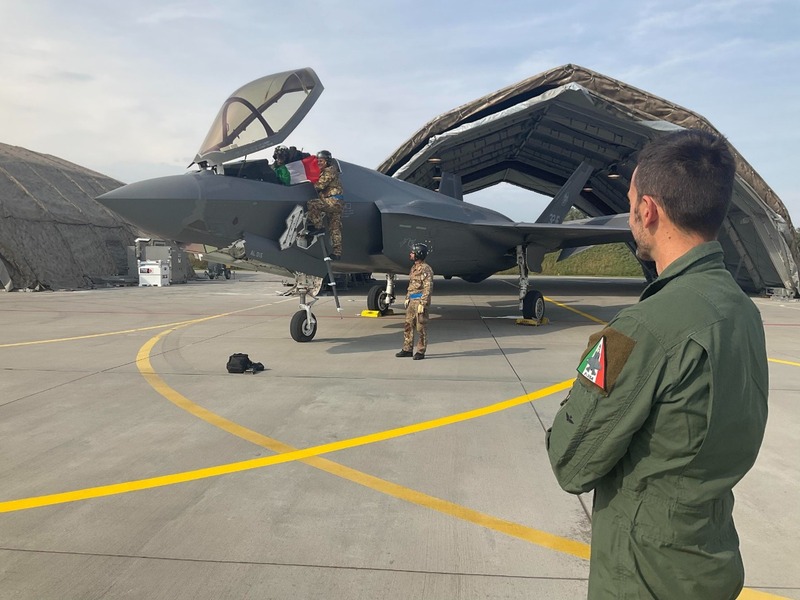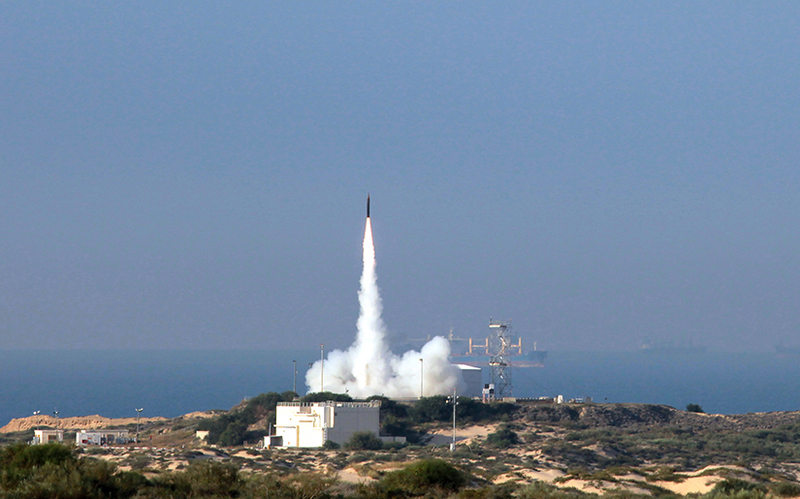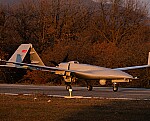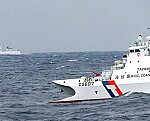NATO airspace security in the context of Russian aggression
Throughout 2023, NATO air forces find themselves on the front line of defence against the growing threat of Russian military aircraft. This required not only preventive action, but also careful analytical reflection on the strategies and implications of this new security reality. This article explores the analytical disentanglement of the central events, strategic actions and challenges associated with NATO's expanded air patrols in the European context.
During 2023, NATO air forces were activated more than 300 times to respond to Russian military aircraft approaching Alliance airspace. Most of these interventions took place over the Baltic Sea. The expanded air patrols were triggered not only by the Russian invasion of Ukraine, but also by the increased irregularity of Russian aircraft movements in NATO space.
NATO routinely conducts standing air patrol missions that require the immediate launch of allied fighter jets when suspicious or unexpected flights of Russian military aircraft occur. Particularly on NATO's eastern flank, Russian military aircraft have historically failed to transmit transponder codes, enter flight plans, and communicate with air traffic controllers.
Most aerial encounters between NATO fighter aircraft and Russian aircraft have been conducted safely and professionally. Violations of NATO airspace by Russian military aircraft remained isolated and usually of a very short-term nature. Dylan White, a NATO spokesman, described Russia's war against Ukraine as the most dangerous security situation in Europe in decades. The situation underscores the need for continued alertness and effective protection of allied airspace.
NATO has responded to repeated Russian incursions into North Atlantic airspace by strengthening its air defences on the eastern flank, which has included an increase in fighter aircraft, reconnaissance flights and ground-based air defences. These measures were taken after repeated Russian attacks on Ukraine's infrastructure near NATO territory. In the subsequent period, additional supersonic aircraft were deployed to Romania, and in October, following the destruction of undersea pipelines in the Baltic Sea, capabilities were further enhanced.
NATO's largest air exercise, Air Defender 23, also took place in 2023, with more than 250 allied aircraft training in the Alliance's collective defence. This event was further evidence of NATO's commitment to maintaining security and stability in the region.
F-35 fighters of the Italian Task Force Air 32nd Wing also played a key role in maintaining the security of NATO airspace, taking off (on the basis of the "Aplha Scramble") from Malbork Air Base in Poland after Alliance radars detected two Russian Su-30 aircraft in international airspace over the Baltic Sea near the NATO border. The unit, equipped with state-of-the-art US fighters, became the optimal choice for joint air patrol missions due to its capabilities and experience gained during joint operational exercises.

The security situation in Europe over the past year, especially in the context of Russian aggression and the war in Ukraine, thus highlights the constant need to protect NATO airspace, where the increased frequency and irregularity of Russian military aircraft movements has required a decisive response from the Alliance. The reinforcement of air forces on the eastern flank and the deployment of modern fighter jets show that NATO takes this security threat seriously.
NATO is also trying to respond not only to direct military action, but also to unexpected events such as attacks on energy infrastructure or gas pipeline accidents. These events increase the complexity of the security situation and the need for flexible and effective measures.
In this context, NATO's enhanced air patrols can be seen as a key element of the overall security strategy in the region. The ability to respond quickly and flexibly to diverse threats is essential in today's geopolitical reality. At the same time, it is important to maintain an open dialogue and cooperation between NATO member states in order to achieve an optimal level of air security in Europe.
One of the responses of European countries to the ongoing war in Ukraine is the creation of a common robust, multi-layered air defence. This idea, which was introduced by Germany to its NATO allies last October, was supported by a total of 15 countries. The idea of a comprehensive European air defence is called the European Sky Shield Initiative (ESSI). The aim is to jointly purchase short-, medium- and long-range air defence assets that will serve as protection against a possible Russian missile attack. Three specific systems are to be procured under the ESSI: the German IRIS-T, the American Patriot and the Israeli Arrow 3.

A total of 15 countries spoke in favor of creating a joint "European" air defense solution during a meeting of NATO defense ministers on October 13, 2022. Specifically, Germany, which is also the initiator of the plan, Lithuania, Latvia, Estonia, the Czech Republic, Slovakia, Hungary, Slovenia, Romania, Bulgaria, Norway, Finland, the Netherlands, Belgium and the UK. This year, Austria, Switzerland, Denmark and Sweden have joined these countries.
As German Chancellor Olaf Scholz said in the context of the ESSI project, ESSI will significantly increase the level of air defence on the European continent and is also cheaper than if each country were to build its own comprehensive air defence system. The ESSI should result in sufficient protection against possible Russian attacks, especially against Russian missiles of various types. The European air and missile defence shield is to be made up of the German-origin IRIS-T short-range system, the American Patriot system and the Israeli Arrow 3. The German Arrow 3 system will also be integrated into the ESSI structures. Deliveries of the first launchers are estimated for 2025.
NATO airspace protection
The detection of aircraft in European airspace is carried out by allied radars, which monitor 30,000 aircraft movements every day. If a tracked aircraft is not using a transponder, has not made radio contact with civil air traffic control or has not communicated a flight plan, its route information is passed to one of two NATO air operations centres. Subsequently, the commander of the respective centre shall decide whether to send rapid response aircraft to intercept and visually identify the aircraft. Special air bases with pilots and aircraft on standby are ready around the clock, i.e. 24/7/365. When tasked, allied aircraft generally take off within minutes, when directed by the command and control center to move as quickly as possible toward the unidentified aircraft. On approaching the target, the aircraft take up a specific position. Pilots must comply with the rules of the International Civil Aviation Organisation. If necessary, allied aircraft may escort the intercepted aircraft to the airport or back from NATO airspace. Once the situation is confirmed, the rapid response aircraft are separated and the operation report is transmitted to the NATO centre where all information on the intercepted subjects is recorded.










